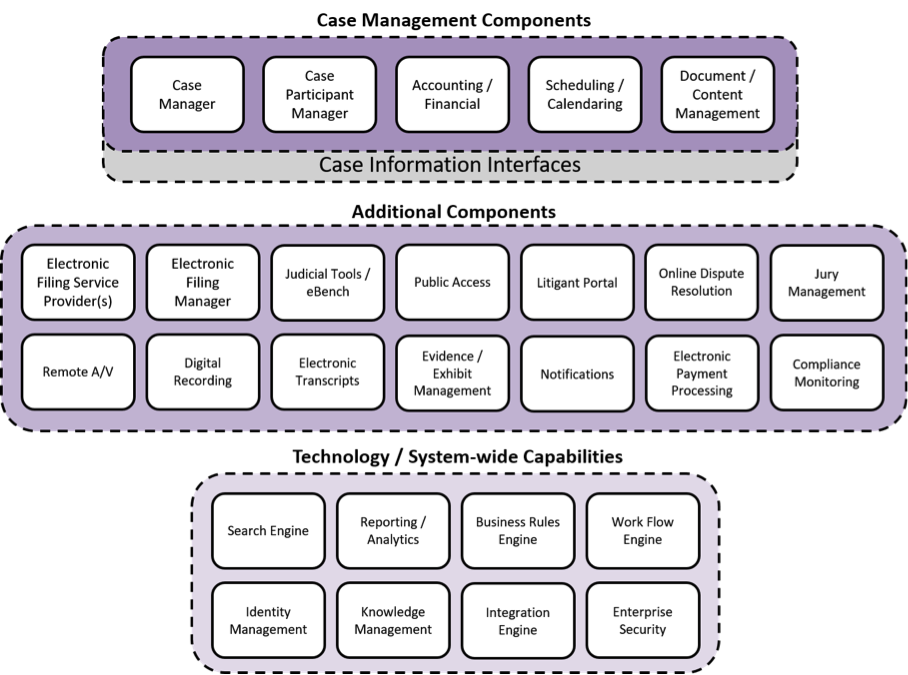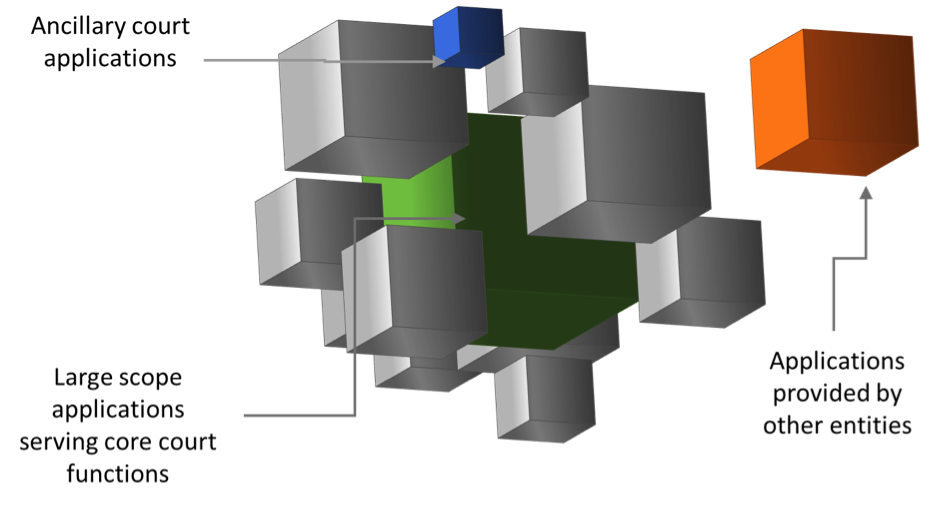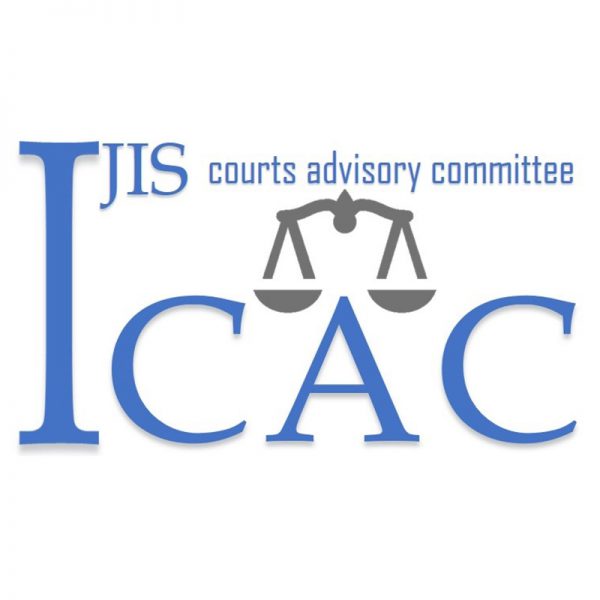Connecting Business and Technology
As noted by Kofi Annan, “Knowledge is power. Information is liberating.” Such a simple and powerful message! But how do you find the information you seek? Ah, there’s always a catch. While Google works well for casting a wide net, sometimes what you really need is a sieve. Enter the Court Technology Provider Directory, or Court Tech Directory — a simple, easy-to-use Web tool that enables court professionals and technology-solution providers to connect the dots between business needs and technology offerings.
The Court Tech Directory presents products and services available in the market in a way that maps their capabilities and application to technology components. The approach should make it easier to find applications that meet the specific challenges the court has at a given time. The technology components used in the directory are the same as those laid out by the Joint Technology Committee (JTC), which represents the Conference of State Court Administrators, NACM, and the National Center for State Courts, in their “Introduction to the Next-Generation Court Technology Standards Application Component Model” bulletin. The bulletin explains, “Using the component model as a reference, court leaders can identify the gaps in their technology environment and, with whatever resources are available, prioritize implementation of the technologies needed to fill those gaps.”
The figure below illustrates the currently proposed components. The Application Component Model is a living model, designed to be changed over time as capabilities are identified or evolve.

Benefits for Courts
On the Court Tech Directory’s website, courts simply select the desired business capabilities, click search, and away they go! Hovering over a capability brings up its applicable definition. This is so a user can confirm right away what is covered and what is not when making a selection.
Search results present only those applications that solution providers indicated and that ICAC has ascertained provide these specific capabilities. Each application shown also includes a cross-reference to other functional components that the application may address.
In addition to functional capabilities, results may include information such as a description, the integration architecture, and the supporting technologies. This gives the user a quick indication whether the application can fit in their technology environment.
From the search results, users can select one or more applications for contacting all providers of the selected applications, or for exporting their basic information to a CSV file to help with contacting solution providers or doing further research. Users can also have the service send an email to the providers of the applications of their choice one at a time, asking to be contacted back via email.
The Court Tech Directory is a free service to the court community. It helps courts cut through the marketing and corporate lingo and get to the heart of the available solutions for their specific business challenges, all in one place.
Benefits for Solution Providers
Solution providers may increase visibility for their offerings by creating and maintaining their listings on the service. Rather than having their products and services lumped into a generic bucket called case management, providers have a searchable channel to show the specific business needs their offerings address.
Once signed up and confirmed, providers can create listings for the products their companies develop and match them to the appropriate components in the model. The service sends all inquiries to a single contact that the solution providers maintain. This service is provided without charge to solution providers.
As the bulletin explains, “This will provide market opportunities to solution providers and increase competition in new market niches.”
Forging the New Path
The Application Component Model introduced last year by the JTC looks to define a new way forward in purchasing and implementing technology for courts. Until now, courts have often implemented monolithic systems that promise to meet all or most of their case management needs in one shot. This approach often leaves many business needs unmet or lacks focus. By defining granular application components and standard interfaces, the hope is that courts are free to choose the best-of-breed applications that address their specific needs at that time with the ability to add on or swap components as needed.

The Court Tech Directory is curated by the IJIS Court Advisory Committee (CAC) in support of the Application Component Model. “It is a basic but comprehensive tool aimed at taking down barriers and better sharing information among all participants in the court market place,” noted CAC Chair, Joe Wheeler.
To promote the clarity and integrity of the information in the directory, the CAC reviews the solution provider submissions and requests clarification regarding the product information submitted before it is publicly available on the directory. “The curators help solution providers avoid causing confusion or disappointment among potential customers,” according to Wheeler.
As the RouteFifty.com blog post “The End of the Custom Technology Era″ points out, “In a time of limited budgets and increasingly-pressing problems, limiting options to the enterprise software incumbents is no longer a sustainable model for government procurements.”
The CAC hopes that the Court Tech Directory can provide immediate value and looks forward to the feedback from court practitioners and solution providers on how the tool can be enhanced and improved for added value in the future.
About the Author
Jenny Bunch is the product owner of ImageSoft, Inc., a software development company with a focus on intelligent workflow automation. She has over ten years of experience working in the justice industry, both in software development and with clerks and judges implementing software solutions. She is a member of the IJIS Court Advisory Committee and previously served on the NACM Communications Committee, where she contributed to the annual guide for court managers in 2014 and oversaw the Top 10 Court Websites Award nomination and selection process for three years. Bunch holds a master’s degree in public administration and she is a certified Project Management Professional (PMP).


